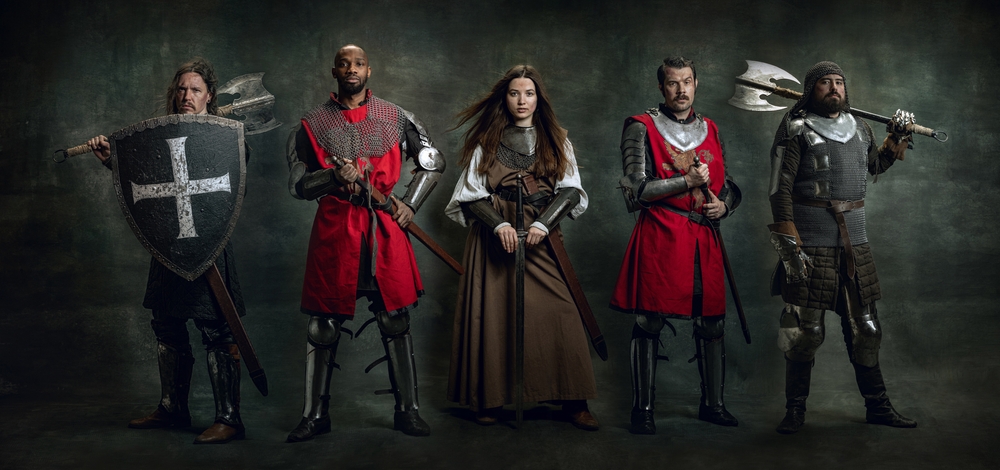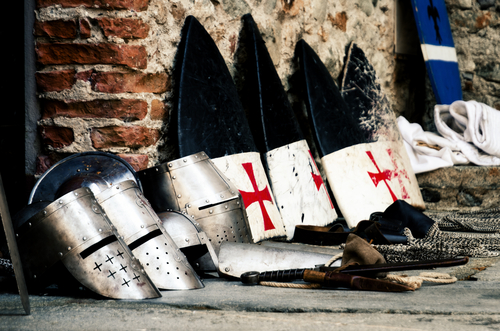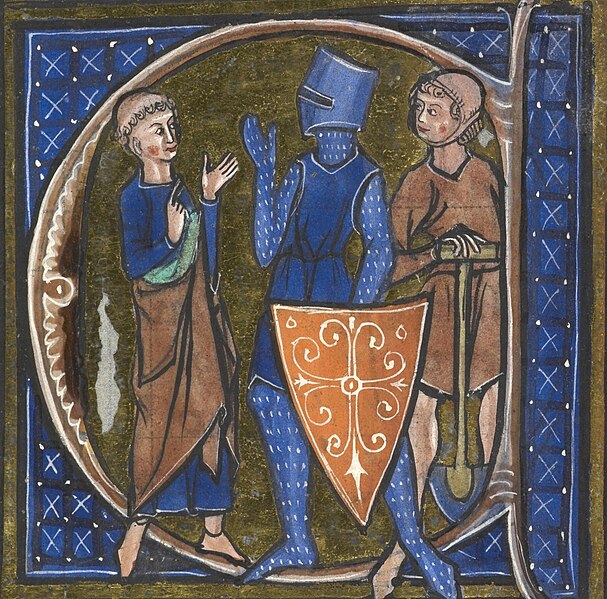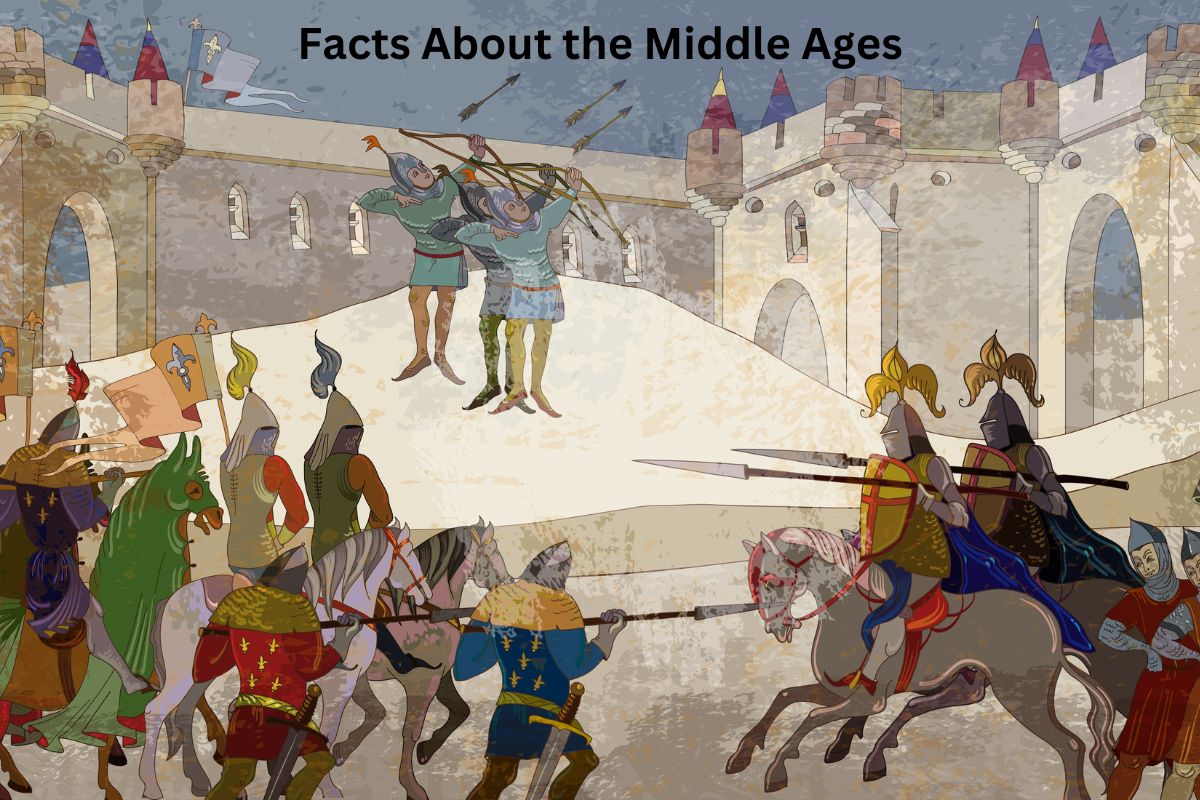The Middle Ages, spanning from the 5th to the 15th century, was a complex and transformative period in European history.
During this time, feudalism shaped society, Gothic architecture flourished, and events like the Crusades and the Black Death left a lasting impact.
Chivalry guided knightly conduct, while the Magna Carta marked a turning point in governance. Notable figures, such as Charlemagne, emerged, and literature like “Beowulf” and advancements in medicine and technology were prominent.
This era laid the foundation for many aspects of modern civilization.
Middle Ages Facts
1. Middle Ages lasted from the 5th to the 15th century
The Middle Ages, also known as the medieval period, is a term used to describe the roughly one-thousand-year span between the fall of the Western Roman Empire in the 5th century and the beginning of the Renaissance in the late 15th century.
Also Read: Timeline of the Middle Ages
This era is often divided into three periods: the Early Middle Ages (5th to 10th century), the High Middle Ages (11th to 13th century), and the Late Middle Ages (14th to 15th century).

2. Feudalism was the dominant social system
Feudalism was the prevailing social, economic, and political system of the Middle Ages. At its core, it involved a hierarchical structure where land and protection were exchanged for service and loyalty.
Also Read: Dark Ages Timeline
Kings granted land (fiefs) to nobles (lords) in exchange for military support and other services. Nobles, in turn, granted land to vassals, who were bound to provide military service and other forms of assistance.
Peasants, often called serfs, worked the land and provided agricultural produce in return for protection. This decentralized system played a significant role in medieval society.
3. The Dark Ages marked its early phase
The term “Dark Ages” is sometimes used to refer to the early part of the Middle Ages, roughly from the 5th to the 10th century.
It’s characterized by a decline in centralized authority, a loss of knowledge and education, and a relative lack of urbanization compared to the Roman Empire that preceded it.
This term is somewhat controversial, as it oversimplifies the era and neglects many cultural and intellectual achievements that occurred during this time.
4. The Crusades were religious wars
The Crusades were a series of religious and military campaigns undertaken by European Christians between the 11th and 13th centuries. The primary objective was to recapture Jerusalem and the Holy Land from Muslim control.

The First Crusade, initiated in 1096, saw the capture of Jerusalem in 1099. Subsequent crusades followed, with varying degrees of success.
The Crusades had a profound impact on European society, leading to increased contact with the Muslim world, the exchange of ideas and goods, and the establishment of trade routes. They also influenced the development of chivalry and knightly culture in Europe.
5. Gothic architecture thrived
Gothic architecture emerged during the High Middle Ages, particularly in the 12th century, and continued into the Late Middle Ages.
It is characterized by several distinctive features:
- Pointed arches: Gothic arches replaced the rounded Romanesque arches, allowing for greater height and stability in buildings.
- Ribbed vaults: Vaulted ceilings were reinforced with rib-like structures, distributing weight more efficiently.
- Flying buttresses: These exterior supports allowed for thinner walls and larger windows, enabling the construction of towering cathedrals.
- Stained glass: Intricate, colorful stained glass windows depicted biblical stories and added a spiritual dimension to Gothic cathedrals.
- Tall spires: Gothic cathedrals featured soaring spires that reached towards the heavens, symbolizing spiritual aspiration.
Notable examples of Gothic architecture include the Chartres Cathedral in France, the Notre-Dame Cathedral in Paris, and the Canterbury Cathedral in England.
6. The Black Death struck in the 14th century
The Black Death, also known as the bubonic plague, struck Europe during the 14th century, specifically in the mid-1300s.
Also Read: Black Death Timeline
This devastating pandemic was caused by the bacterium Yersinia pestis, which was transmitted to humans through fleas that infested rats. The Black Death resulted in:
- Massive mortality: It is estimated to have wiped out between 25% and 60% of Europe’s population, leading to severe labor shortages.
- Socioeconomic changes: The reduced labor force gave peasants greater bargaining power, leading to wage increases and the decline of feudalism.
- Cultural impact: The trauma of the Black Death influenced art, literature, and religious thought, with themes of death and the afterlife becoming more prevalent.

7. Chivalry guided knights’ behavior
Chivalry was a code of conduct followed by knights in medieval Europe during the Middle Ages. Key aspects of chivalry included:
- Honorable behavior: Knights were expected to act with integrity, honesty, and fairness in all their dealings.
- Loyalty: Loyalty to one’s lord and fellow knights was highly valued.
- Bravery: Knights were expected to be courageous in battle and protect the weak.
- Respect for women: Chivalry often involved a romanticized notion of courtly love, where knights were to treat women with respect and devotion.
Chivalry was celebrated in literature, such as Arthurian legends, and influenced the behavior and ideals of knights during the Middle Ages.
8. Magna Carta limited the monarchy’s power
The Magna Carta, Latin for “Great Charter,” was a historic document signed in 1215 in England.
It was a pivotal moment in the development of constitutional law and limited the powers of the English monarchy. Some key aspects of the Magna Carta include:
- Rule of law: It established the principle that even the king was subject to the law and required the monarch to obtain the consent of his barons for certain decisions.
- Protection of rights: The Magna Carta contained provisions protecting the rights of free men, ensuring fair treatment and due process.
- Checks and balances: It laid the groundwork for the idea that the king’s power should be balanced by the rights of his subjects and the authority of the church.
9. The Hundred Years’ War spanned over a century
The Hundred Years’ War was a long-running conflict that lasted from 1337 to 1453, involving intermittent warfare between England and France.
Some key points about the Hundred Years’ War include:
- Causes: The war had multiple causes, including territorial disputes, dynastic claims, and economic rivalry.
- Notable figures: Joan of Arc, a young French peasant girl, played a crucial role in turning the tide of the war in favor of France.
- Impact: The war had a profound impact on military technology and tactics, contributing to the decline of feudalism and the rise of professional armies.
10. Charlemagne was a notable emperor
Charlemagne, also known as Charles the Great, was crowned as the Holy Roman Emperor in the year 800 AD.
He ruled over a vast empire that covered much of Western and Central Europe. Some notable aspects of Charlemagne’s rule include:
- Cultural revival: Charlemagne’s reign marked a Carolingian Renaissance, characterized by a revival of learning, art, and culture.
- Administrative reforms: He implemented administrative reforms, such as the division of his empire into counties and the promotion of education.
- Christianity: Charlemagne was a fervent Christian and played a significant role in spreading Christianity across his empire.
11. Medieval literature included “Beowulf”
The Middle Ages produced a rich body of literature that encompassed a variety of genres and themes.
Some notable works and authors include:
- “Beowulf”: An epic poem of Anglo-Saxon origin that tells the story of a hero’s battles against supernatural creatures.
- Geoffrey Chaucer: Known for “The Canterbury Tales,” a collection of stories that provides a vivid picture of medieval English society.
- Dante Alighieri: Wrote the “Divine Comedy,” an epic poem that takes readers on a journey through Hell, Purgatory, and Heaven.
12. Medieval medicine combined classical and folk knowledge
Medical practices in the Middle Ages were influenced by a blend of classical knowledge and folklore.
Some key points about medieval medicine include:
- Physicians and barber-surgeons: Physicians practiced learned medicine, while barber-surgeons performed surgical procedures.
- Herbal remedies: Many treatments relied on herbal remedies, and monasteries often served as centers of medical knowledge.
- Limited understanding: Medical knowledge was limited compared to modern standards, and there were superstitions and misconceptions about health and illness.
13. Innovations like windmills and clocks emerged
Despite the perception of the Middle Ages as stagnant, there were notable innovations during this era, including:
- Windmills: The use of windmills for grinding grain and pumping water became widespread.
- Mechanical clocks: The development of mechanical clocks improved timekeeping accuracy.
- Advancements in metallurgy: Techniques for refining and working with metals improved, leading to better weapons and tools.
